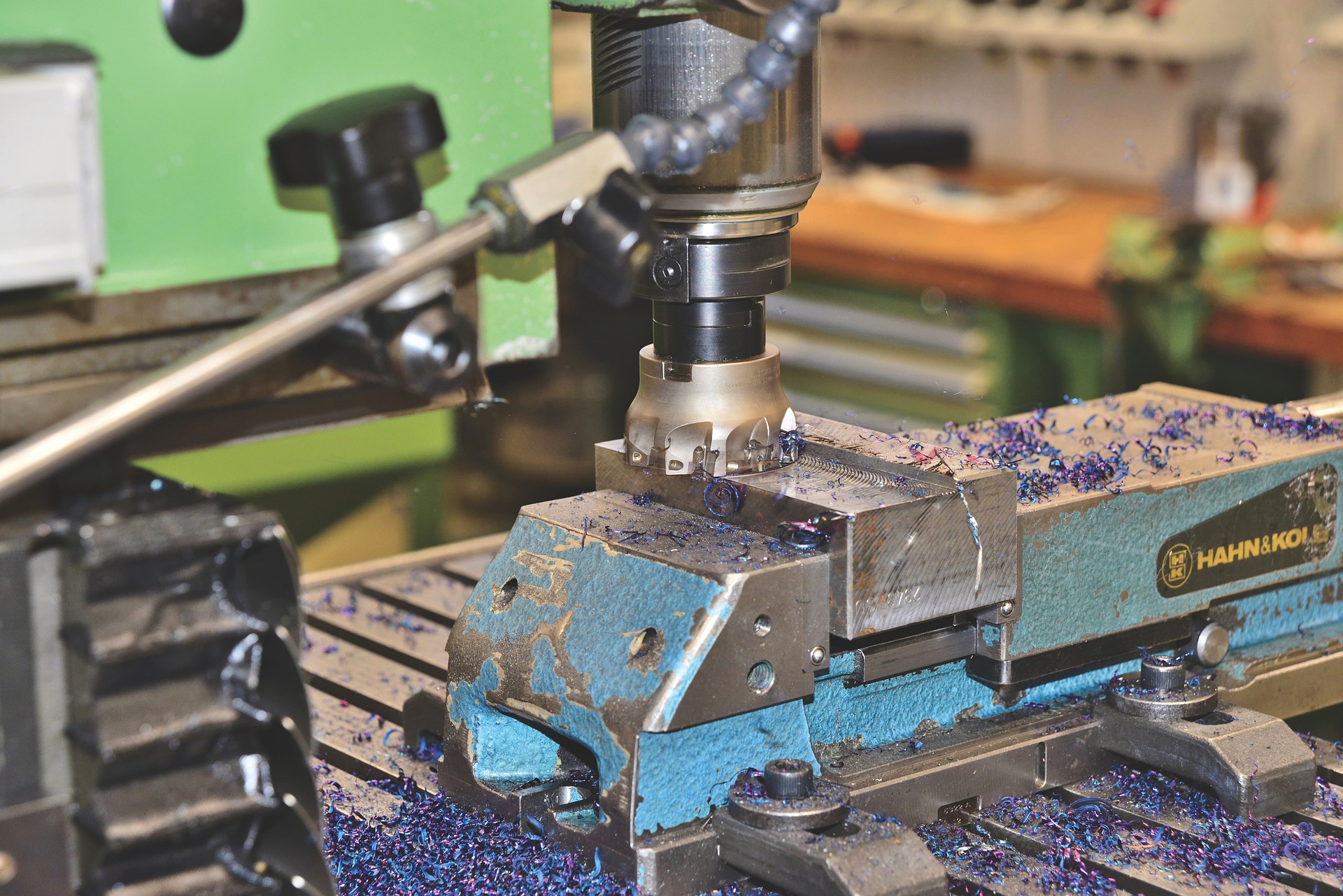Overall Equipment Effectiveness (OEE) is a key performance indicator (KPI) that is widely used in the manufacturing industry to measure the performance of equipment and production processes.
OEE measures how well a machine or production line is performing regarding availability, performance, and quality. It is a powerful tool that can be used to identify areas for improvement and optimize manufacturing processes.
OEE: A brief history
Overall Equipment Effectiveness traces its roots back to Japan in the 1960s, during the rise of the Total Productive Maintenance (TPM) movement.
It was developed by Seiichi Nakajima, a prominent figure in the Japanese manufacturing industry, who aimed to create a standardized metric that could measure how effectively equipment was being used. Nakajima introduced OEE as a way to quantify the efficiency of individual pieces of equipment by assessing their availability, performance, and quality. This metric was designed to identify areas for improvement and reduce waste, aligning with the broader goals of Lean Manufacturing.
OEE began to gain traction in Japan as companies adopted TPM principles, seeking to enhance productivity and reduce downtime. The metric provided a clear and actionable way for manufacturers to monitor the health of their equipment and make data-driven decisions.
By the 1980s, OEE had become a cornerstone of TPM, widely recognized as a critical tool for improving manufacturing processes and boosting overall efficiency. Its simplicity and effectiveness made it appealing to industries beyond Japan, and soon it began spreading globally.
In the 1990s and 2000s, OEE saw a surge in popularity as Lean Manufacturing principles gained prominence worldwide. Companies in various industries, from automotive to pharmaceuticals, began adopting OEE as part of their continuous improvement strategies.
The rise of digital technologies further fueled its adoption, as manufacturers could now collect real-time data and analyze OEE metrics more easily. Today, OEE is a widely accepted standard in the manufacturing industry, recognized as a key performance indicator that helps companies optimize their operations, reduce costs, and improve competitiveness.
The Three Components of OEE
OEE is a metric that is calculated by multiplying three factors: availability, performance, and quality. Each of these factors is expressed as a percentage, and the product of these percentages gives the OEE score.
Availability
Availability measures the percentage of time that a machine is available for production.
Performance
Performance measures the speed at which the machine operates compared to its theoretical maximum speed.
Quality
Quality measures the percentage of good quality products that are produced by the machine.
The formula for OEE (OEE calculation)
The formula for calculating OEE is pretty simple.
OEE = Availability x Performance x Quality
Now, let’s take a closer look at each of these factors.
Availability: Availability is a measure of the percentage of time that a machine is available for production.
Availability is like a car’s engine running time during a road trip. Imagine planning a long journey, but every time you stop for gas, take a break or have an unexpected issue, the engine is off, and you’re not moving toward your destination. Even though you’re on the trip, you’re only making progress when the engine is running.

OEE calculations include both scheduled and unscheduled downtime.
Scheduled downtime is planned downtime for maintenance, changeovers, or other activities that cannot be performed while the machine is running. Unscheduled downtime is unplanned downtime due to breakdowns, malfunctions, or other unexpected events.
To calculate availability, we divide the total time that the machine is available for production by the total time in the period being measured, and then multiply by 100 to get a percentage.
Availability = (Total operating time – Downtime) / Total operating time x 100
Performance: Performance is a measure of the speed at which the machine operates compared to its theoretical maximum speed.
Performance is like the speed at which you’re driving during a road trip. Imagine you have a planned speed that will get you to your destination on time. If you consistently drive at that speed, you’re making the best possible time. But if you encounter traffic, bad weather, or decide to slow down, you’re not traveling as fast as you could be, and it takes longer to reach your goal
The theoretical maximum speed is the speed that the machine is designed to operate at, and is based on factors such as the machine’s cycle time and design capacity. Performance takes into account factors such as machine speed, operator performance, and minor stops.
To calculate performance, we divide the total number of units produced by the actual production time, and then divide that by the theoretical maximum production rate. Finally, we multiply by 100 to get a percentage.
Performance = (Total units produced / Actual production time) / Theoretical maximum production rate x 100
Quality: Quality is a measure of the percentage of good quality products that are produced by the machine. This includes both products that meet the required specifications and those that are produced without defects.
Quality is like the condition of the cargo you’re transporting during a road trip. Imagine you’re driving to deliver a shipment of fragile items. Even if you drive non-stop at the perfect speed, it only counts if your cargo arrives intact. If some items get damaged along the way—whether from rough roads, sharp turns, or improper packing—those damaged items can’t be used, which means your trip was less successful.
To calculate quality, we divide the total number of good units produced by the total number of units produced, and then multiply by 100 to get a percentage.
Quality = (Good units produced / Total units produced) x 100
Now that we have looked at each of these factors in more detail, let’s consider how OEE can be used to improve manufacturing processes.
How to use OEE to improve performance
OEE is a powerful tool that can be used to identify areas for improvement in manufacturing processes. By measuring the performance of equipment and production processes, manufacturers can identify bottlenecks, inefficiencies, and areas of waste, and then take steps to address these issues. For example, if a machine has a low OEE score due to frequent breakdowns, the manufacturer can invest in preventative maintenance to reduce downtime and improve availability.
Alternatively, if a machine has a low score due to low performance, the manufacturer can look at ways to optimize the production process or upgrade the machine to increase its speed.
Finally, visual management tools such as OEE dashboards can be set up in the factory to provide real-time visibility into the performance of different machines. This transparency enables quicker decision-making and allows for immediate corrective actions when issues are identified. Over time, by systematically addressing the root causes of low OEE scores, manufacturers can significantly improve their overall productivity, reduce waste, and increase profitability.
Benefits of OEE
Identifying Hidden Losses
OEE helps uncover inefficiencies that might not be immediately obvious. By breaking down performance into availability, performance, and quality, manufacturers can pinpoint specific areas where losses are occurring, such as frequent minor stoppages, slower cycle times, or quality defects. This granular insight allows for targeted improvements, reducing waste and increasing overall efficiency.
Driving Continuous Improvement
OEE serves as a foundational tool for continuous improvement initiatives like Lean Manufacturing or Six Sigma.
By regularly monitoring OEE, manufacturers can track progress over time, set realistic goals, and implement changes that drive incremental gains in efficiency. This ongoing focus on improvement helps maintain competitiveness in a rapidly changing market.
Enhancing Predictive Maintenance
With OEE data, manufacturers can better anticipate when equipment might fail or require maintenance. By monitoring availability and performance trends, they can implement predictive maintenance strategies that minimize unplanned downtime, extend the life of equipment, and reduce repair costs. This proactive approach helps keep production lines running smoothly.
Supporting Data-Driven Decision Making
OEE provides quantifiable data that managers can use to make informed decisions. Whether it’s deciding where to invest in new equipment, optimizing production schedules, or allocating resources, OEE metrics give a clear picture of where improvements can be made and what impact those improvements will have on overall performance.
Boosting Employee Engagement
When employees are aware of OEE metrics, it fosters a sense of ownership and accountability. By understanding how their actions affect equipment effectiveness, operators and maintenance teams are more likely to take proactive steps to minimize downtime, ensure quality, and maintain optimal performance. This engagement can lead to a more motivated workforce and a stronger culture of continuous improvement.
Facilitating Benchmarking
OEE allows manufacturers to benchmark their performance against industry standards or competitors. By comparing scores, companies can identify where they stand relative to others in their field and set targets for improvement. This benchmarking process drives competitiveness and encourages the adoption of best practices.
Improving Customer Satisfaction
By optimizing OEE, manufacturers can ensure more consistent production schedules, higher-quality products, and on-time delivery. This reliability directly translates to improved customer satisfaction, as clients receive better products with fewer delays. In a competitive market, this can lead to stronger customer relationships and repeat business.
Challenges in implementing OEE
Implementing Overall Equipment Effectiveness can be highly beneficial, but it comes with its own set of challenges. Below are some of the common obstacles manufacturers may encounter.
Additionally, we included ways in which MontBlancAI can help manufacturers overcome those challenges.
Data Accuracy and Consistency:
One of the biggest challenges in implementing OEE is ensuring that the data collected is accurate and consistent.
Inaccurate data can lead to misleading calculations, which in turn can result in poor decision-making. Collecting precise data requires well-calibrated sensors, proper training for operators, and clear guidelines on what constitutes downtime, reduced performance, or defective products.
MontBlancAI relies on automated data collection. This means manufacturers who use MontBlancAI can have the highest degree of confidence in the accuracy of the data collected.
Resistance to Change:
Employees, especially those accustomed to traditional methods, may resist adopting OEE.
They might view it as an additional layer of monitoring or feel threatened by the transparency it brings to their performance. Overcoming this resistance requires effective communication, training, and showing the benefits of OEE for both the company and its employees.
Resistance to change can also stem from the perception that OEE tools are too complex to use. However, MontBlancAI stands out as one of the most user-friendly and easy-to-set-up solutions in the industry. This simplicity ensures a smoother transition and higher adoption rates among employees, allowing manufacturers to fully leverage the benefits of OEE with minimal disruption.
Complexity in Implementation:
OEE implementation can be complex, especially in facilities with multiple machines, varying product lines, or diverse manufacturing processes. Standardizing OEE across different machines and processes, each with its unique challenges can be difficult and time-consuming.
However, with MontBlancAI as a SaaS tool, the implementation process is greatly simplified. Manufacturers can easily connect their machines to the cloud, create an account, and start using the tool with minimal hassle. This streamlined approach allows for quicker and more efficient standardization across diverse machines and processes.
Initial Investment Costs:
Implementing OEE often requires an initial investment in technology, such as sensors, software, and training programs. For small to medium-sized manufacturers, these costs can be a barrier. Convincing stakeholders of the long-term benefits versus the upfront costs can be challenging.
With MontBlancAI being a SaaS (Software as a Service) tool, the initial barrier to entry is significantly reduced, making it a more accessible and cost-effective option for small to medium-sized manufacturers.
Difficulty in Root Cause Analysis:
While OEE highlights areas where performance is lacking, it doesn’t automatically explain why those issues are occurring. Identifying the root causes of low availability, performance, or quality requires additional analysis and effort, which can be a challenge without the right tools and expertise.
MontBlancAI’s advanced analytics tools can help you get to the root cause of problems without the need of additional tools.
Maintenance of OEE Systems:
Once OEE systems are in place, they require ongoing maintenance and updates to remain effective. This includes keeping software up to date, ensuring sensors and equipment are functioning properly, and regularly training staff on best practices. Without regular maintenance, the effectiveness of OEE measurements can degrade over time.
However, with MontBlancAI as a SaaS solution, manufacturers can rest assured that software maintenance, updates, and improvements are handled automatically by the service provider, significantly reducing the burden on internal teams.
Balancing OEE with Other Metrics:
Focusing too heavily on OEE can lead to a narrow view of manufacturing performance. Manufacturers may neglect other important metrics, such as safety, employee satisfaction, or environmental impact. Striking the right balance between OEE and other key performance indicators (KPIs) is essential but can be challenging.
Customization to Specific Needs:
Different manufacturing environments have unique requirements and constraints. Off-the-shelf OEE tools and approaches may not fit perfectly with every operation. Customizing OEE to align with specific production processes, goals, and challenges can be difficult and may require specialized expertise.
Time Required to See Results:
OEE is not a quick fix; it’s a tool for long-term improvement. Companies may become discouraged if they don’t see immediate results or if the initial data collection and analysis process takes longer than expected. Patience and a commitment to continuous improvement are necessary to realize the full benefits of OEE.
Addressing these challenges requires a combination of careful planning, effective change management, investment in the right tools and technologies, and a commitment to continuous improvement.
Conclusion
Implementing OEE is a powerful strategy for manufacturers seeking to enhance operational efficiency and drive continuous improvement. By understanding the three core components—Availability, Performance, and Quality—companies can effectively measure and optimize their production processes. The benefits of OEE are far-reaching, from uncovering hidden losses and driving predictive maintenance to fostering a culture of data-driven decision-making and continuous improvement.
However, it’s important to recognize the challenges that come with implementing OEE, such as ensuring data accuracy, overcoming resistance to change, and managing the complexity of integration across diverse manufacturing environments. Despite these hurdles, tools like MontBlancAI make the process more accessible and manageable, particularly for small to medium-sized manufacturers, by lowering the barrier to entry and minimizing ongoing maintenance demands.
Ultimately, while the journey to fully realizing the benefits of OEE may require investment and effort, the long-term rewards—such as improved productivity, higher employee engagement, and greater customer satisfaction—make it a worthwhile endeavor. By leveraging OEE effectively, manufacturers can not only enhance their current operations but also lay a strong foundation for sustained growth and competitiveness in the future.


